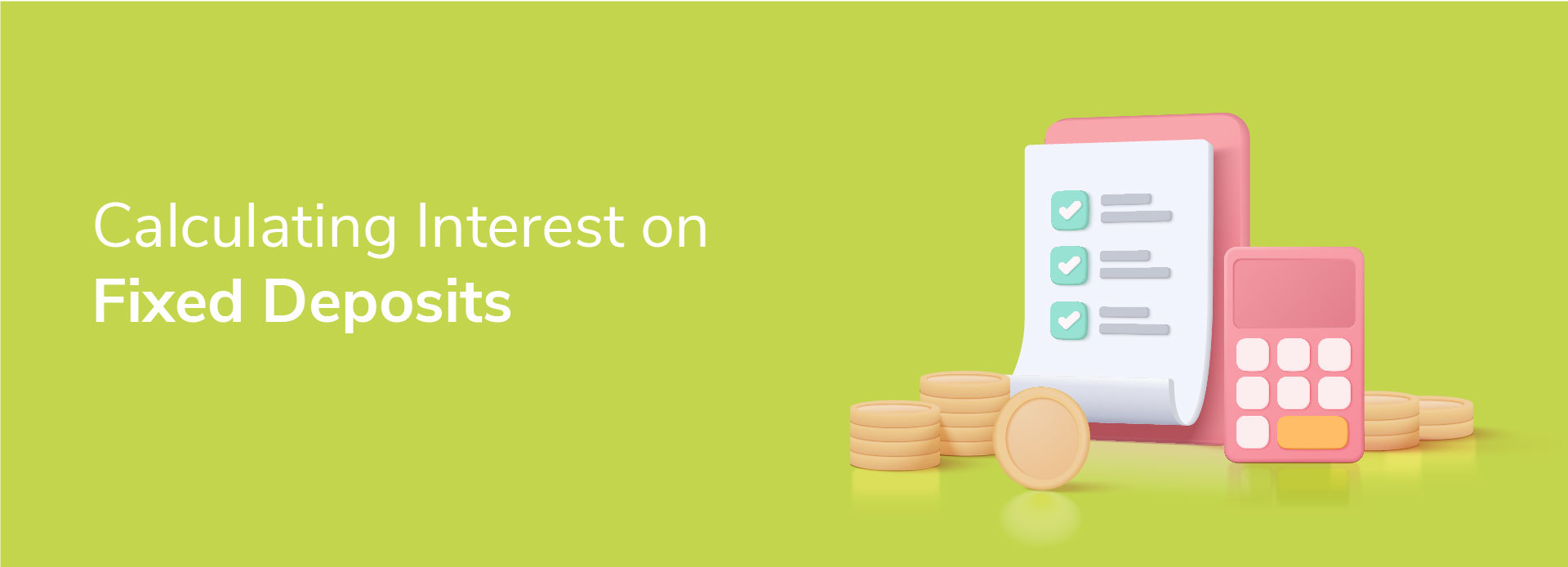
How to Calculate Interest on Fixed Deposits: A Step-by-Step Guide
09 April 2024 | By INDIE
Fixed deposits are one of the most popular investment options in the market today. They are a safe and reliable investment tool that offers guaranteed returns and are suitable for those who prefer low-risk investments. Fixed deposits offer a range of benefits, such as higher interest rates than savings accounts, flexible tenures, and the option of periodic payouts.
Whether you are a first-time investor or an experienced one, fixed deposits can be a great addition to your investment portfolio. However, before investing in a fixed deposit, it's important to understand how to calculate interest on a fixed deposit. There are various types of fixed deposits available, and many factors can impact your returns. In this article, we will guide you through the process of calculating interest on fixed deposits and help you make an informed decision about your investment.
What Are the Steps to Calculate FD Interest?
Follow these steps to know how to calculate interest on a fixed deposit.
1. Calculate the interest rate: In this case, let’s assume the interest rate is 7.50% per annum.
2. Calculate the number of compounding periods: Since you have chosen the reinvestment option, the interest will be compounded quarterly. Therefore, the number of compounding periods in a year will be four.
3. Calculate the tenure: Here, let us assume the tenure is 1 year and 0 months. Since the interest will be compounded quarterly, we need to convert the tenure into quarters. So, the tenure will be 4 quarters.
4. Calculate the principal amount: The principal amount is the amount you are investing, which in this case is ₹10,000.
5. Calculate the maturity amount: The maturity amount is the total amount you will receive at the end of the tenure, including the principal and interest. To calculate the maturity amount, the tool uses the following formula:
Maturity Amount = P (1 + r/n)^(n*t)
Where,
P = Principal amount
r = Interest rate per annum
n = Number of compounding periods in a year
t = Tenure in years
So, using this formula, the maturity amount will be calculated as follows:
Maturity Amount = 10,000 x (1 + 0.075/4)^(4*1)
= 10,000 x (1.01875)^4
= ₹10,771.36
So, your maturity amount after 1 year and 0 months with a re-investment option and an interest rate of 7.50% per annum will be ₹10,771.36.
Also Read: How is Fixed Deposit Better Than Other Investments?
FD Interest Rates vs Other Investments
Here is a comparison table showing the difference between FD interest, savings accounts, mutual funds, and ULIPs:
| Feature |
Fixed Deposit (FD) |
Savings Account |
Mutual Fund |
ULIP (Unit Linked Insurance Plan) |
| Primary Purpose |
Earn guaranteed interest |
Save money and easily access it |
Grow wealth through investment |
Invest and get insurance coverage |
| Return Potential |
Fixed and predictable |
Low but guaranteed |
Potentially high but with risk |
Potentially high with risk, includes insurance benefit |
| Liquidity |
Low (funds locked until maturity) |
High (easy access to money) |
Moderate (redemption may take days) |
Low (lock-in period, surrender charges)
|
| Risk |
Low (guaranteed returns) |
Low (capital protected) |
Moderate to high (market fluctuations) |
Moderate to high (market fluctuations, insurance charges) |
| Taxation |
Interest income taxed |
Interest income up to ₹10,000 exempts, TDS on higher amounts |
Capital gains taxed (except ELSS), dividend distribution tax |
Maturity benefit and death benefits tax-free under certain conditions |
| Suitability |
Risk-averse investors, short-term goals |
Emergency fund, regular expenses |
Long-term wealth creation, investment goals |
Investment with life insurance cover |
Fixed Deposits Are a Popular Investment Option In India
Due to their trustworthiness, guaranteed returns, and reliability, INDIE Fixed Deposits are considered a low-risk investment tool. Compared to other investment options like stocks or mutual funds, fixed deposits provide a sense of security as they have a fixed interest rate and maturity date. This allows investors to plan their finances with greater predictability and certainty.
Moreover, several banks, post offices, and other financial institutions across India offer fixed deposits, making them easily accessible to a wide range of investors. Many banks also provide FD with flexible tenures, ranging from as little as seven days to as long as 10 years. This allows investors to choose a tenure that aligns with their financial goals. Additionally, periodic payouts, reinvestment options, and the option to take a loan against FDs are some of the added benefits. This makes fixed deposits a preferred investment option for many.
Conclusion
Fixed deposits are considered one of the most preferred investment options in India, owing to their reliability and low-risk factor. They offer guaranteed returns, flexible tenures, and periodic payouts, making them an ideal addition to any investment portfolio. Having a comprehensive understanding of how fixed deposit interest rates are calculated can help make well-informed decisions about their investments. In summary, fixed deposits provide a perfect balance of low risk and guaranteed returns, thereby making them a trustworthy investment tool for many.





